1930s
Attempts record for fasting

Raymond Tac begins attempt to set world record for fasting
February 1931: Fifty days into a fasting contest, Alf Wilson, of England, had to withdraw from the contest on the advice of his doctor. This left Raymond Tac, of New Zealand, the winner.
However, Tac was eager to keep fasting. So soon after he launched into an attempt to break his personal record of going ninety days and four hours without food — which apparently, at the time, was also a world record.
Tac sealed himself behind a glass wall, through which spectators could view him, having announced that he would live for over three months with mineral water and cigarettes as his only nourishment.
Unfortunately I don't know if Tac succeeded in his attempt to break his record. I haven't been able to find any reports about it. In fact, it's difficult to know what the world record for fasting is since Guinness doesn't maintain an official record for that activity, and there's a number of different claims to the title.

Reno Gazette Journal - Feb 18, 1931

Manitowoc Herald Times - Mar 3, 1931
Posted By: Alex - Thu Oct 06, 2016 -
Comments (1)
Category: Food, World Records, 1930s
Hindu Ceremonial Animal Marriages

1932 report here.
The practice of having a human marry an animal for various mystical reasons has been a part of Hindu religion for who-knows-how-long, and continues to the present.

Full article here.
And then of course there is marrying a tree as well.
Posted By: Paul - Sat Sep 10, 2016 -
Comments (5)
Category: Animals, Anthropomorphism, Religion, Husbands, Wives, 1930s, Asia
The Importance of Penmanship
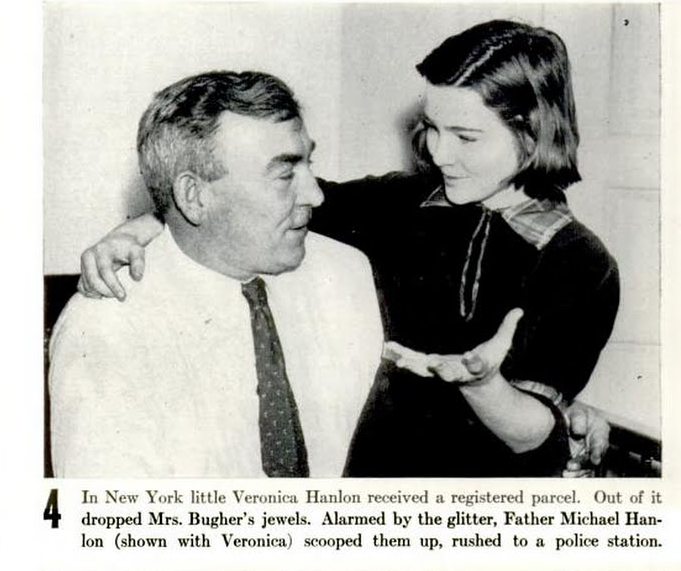
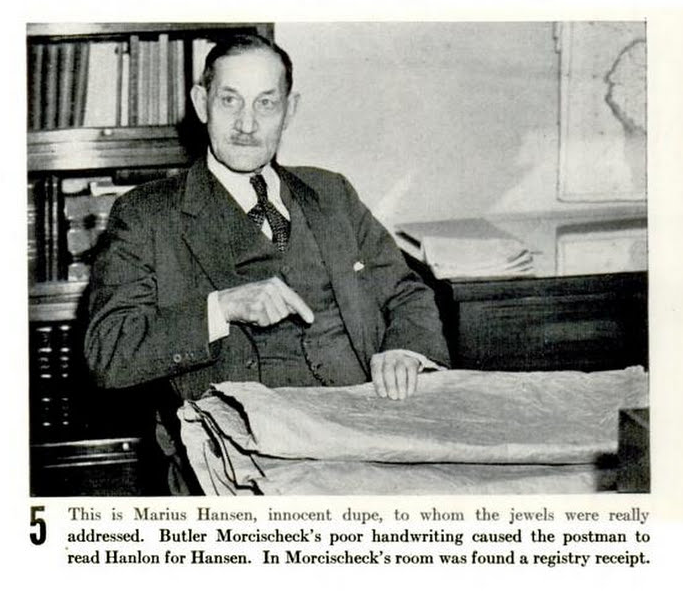
Original article here.
1) Butler steals $350,000 worth of jewelry. (This was in 1937, so really worth $5,849,059.03.)
2) Mails jewels in package to a preset postal drop.
3) Scrawls address so badly, jewels delivered to innocent young girl.
4) Kerblooey.
Posted By: Paul - Thu Sep 08, 2016 -
Comments (1)
Category: Stupid Criminals, Children, 1930s
Mystery Illustration 28
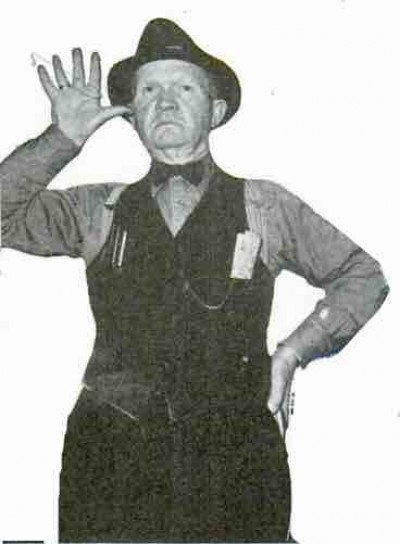
In what industry or occupation is this a professional signal?
The answer is here.
Posted By: Paul - Sat Aug 20, 2016 -
Comments (4)
Category: Signage, 1930s
Priest shoots photographer out of sky
Larry Walters gained weird-news fame in 1982 when he tied 45 helium-filled weather balloons to a lawn chair and took an unscheduled flight over Los Angeles. However, he wasn't the first person to have this kind of aerial adventure.On September 28, 1937, news photographer Al Mingalone was on assignment in Maine trying to get photos from a "balloonist's point of view." This involved using gas-filled weather balloons to lift him into the air. But with 27 balloons pulling him upwards, the safety line keeping him tethered to the ground snapped, sending him drifting across the countryside, towards the ocean.
He floated 13 miles before a local Catholic priest, Rev. James J. Mullen, who happened to be a crack rifle shot, managed to shoot enough of the balloons to bring Mingalone back to the ground.
Read a longer account of Mingalone's flight here.

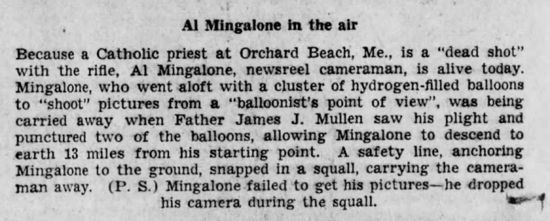
The Kane Republican - Oct 2, 1937
Posted By: Alex - Fri Jul 22, 2016 -
Comments (1)
Category: Air Travel and Airlines, 1930s
Odd Bicycles
Posted By: Paul - Mon Jul 18, 2016 -
Comments (1)
Category: Bicycles and Other Human-powered Vehicles, Eccentrics, Inventions, 1930s
Rev. irwin Moon, Science Preacher
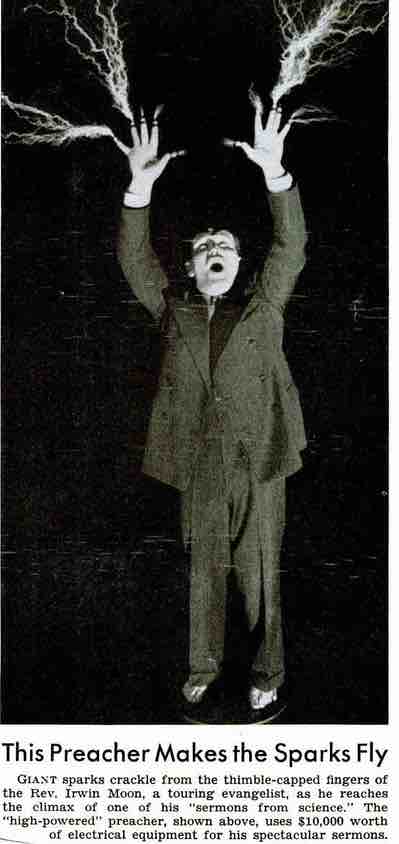
Obituary here.
Posted By: Paul - Fri Jul 15, 2016 -
Comments (0)
Category: Eccentrics, Religion, Science, 1930s
Trick Valise
March 1937: A tricked-out payroll satchel foiled would-be robbers. From Newsweek (Apr 3, 1937):Quite ingenious, but seems like it would work only once, since after that everyone would know what the trick was. So how did they protect the payroll subsequently?

Newsweek - Apr 3, 1937
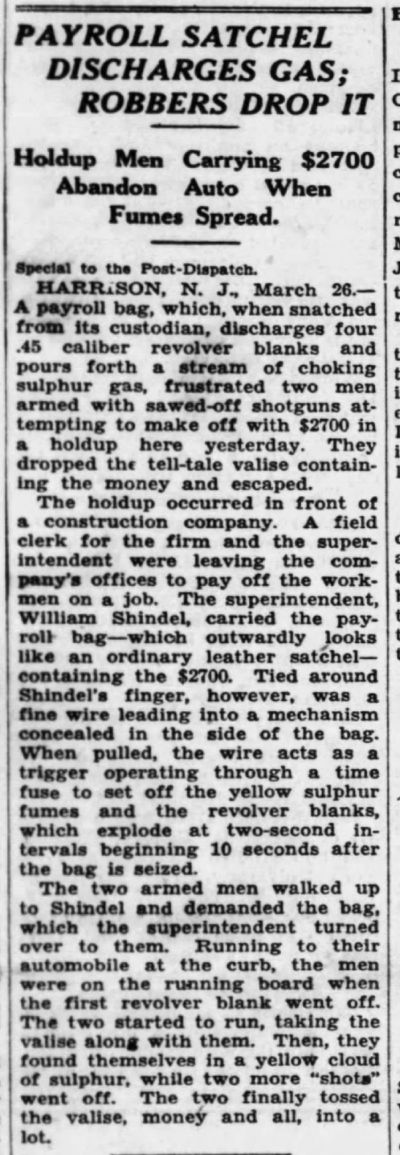
St. Louis Post-Dispatch - Mar 26, 1937
Posted By: Alex - Sat Jun 18, 2016 -
Comments (5)
Category: Crime, Inventions, 1930s
Three Thousand Deer Trophies
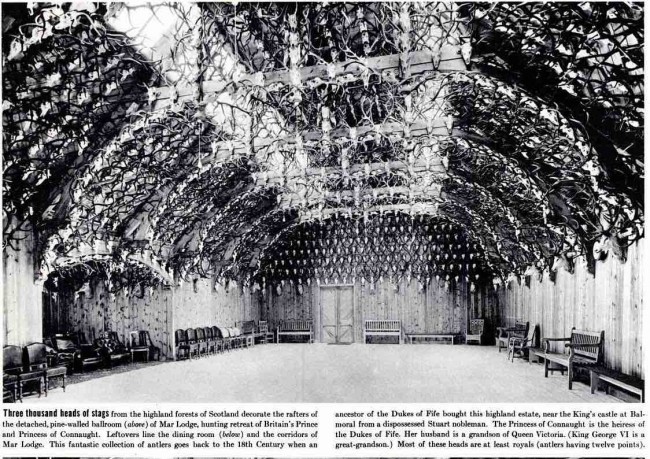
[Click to enlarge]
Original pic here.
Wikipedia entry here.
Posted By: Paul - Fri May 27, 2016 -
Comments (8)
Category: Animals, Hunting, Trapping and Other Wilderness Activities, Royalty, 1930s, Europe
That Sly Old Gentleman from Featherbed Lane
Charming song about elderly neighborhood Peeping Tom.
Posted By: Paul - Sun May 22, 2016 -
Comments (1)
Category: Eccentrics, Myths and Fairytales, 1930s

| Who We Are |
|---|
| Alex Boese Alex is the creator and curator of the Museum of Hoaxes. He's also the author of various weird, non-fiction, science-themed books such as Elephants on Acid and Psychedelic Apes. Paul Di Filippo Paul has been paid to put weird ideas into fictional form for over thirty years, in his career as a noted science fiction writer. He has recently begun blogging on many curious topics with three fellow writers at The Inferior 4+1. Contact Us |




